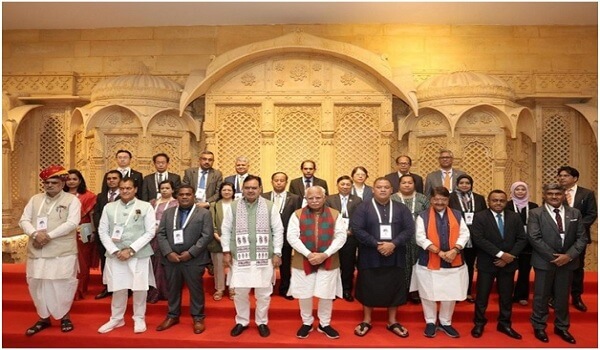India launched a multinational coalition called ‘Cities Coalition for Circularity (C-3)’, which aims to promote sustainable urban development through city-to-city collaboration, knowledge sharing and private sector partnerships.The launch of C-3 was announced during the inauguration of the 12th Regional 3R and Circular Economy Forum in Asia and the Pacific in Jaipur.The inaugural ceremony held in Jaipur also witnessed the signing of a key Memorandum of Understanding (MoU) for CITIIS 2.0, which will prove to be a major milestone in urban sustainability initiatives.Under this, agreements worth Rs 1,800 crore were announced for the City Investments to Innovate, Integrate and Sustain 2.0 (CITIIS) initiative, which will benefit 18 cities in 14 states.The C-3 Forum will adopt the Jaipur Declaration (2025-2034), which is a non-political, non-binding commitment Which will guide efforts over the next decade towards resource efficiency and sustainable urban development.
Coalition of Cities for Circularity (C-3)
- It is to accelerate the adoption of a circular economy by connecting cities, academia and technological innovators.
- It aims to help cities in the Asia-Pacific region address challenges in waste management and resource efficiency.
- Catalyze resource efficiency and low-carbon economy, strengthen collaboration among policymakers, industry leaders and researchers to build a more sustainable future.
- India plans to introduce C-3 as an important digital platform to encourage collaboration, partnership and innovation among cities in the country and the world.
- The Indian Prime Minister proposed the formation of a working group of member countries to finalize the structure and operational framework of the C-3 Coalition.
Other Circular Economy Initiatives
- Mission Life (Lifestyle for Environment).
- Panchamrut aims to commit India to net-zero emissions by 2070.
- Swachh Bharat Mission and AMRUT 2.0, tackling urban waste and wastewater recycling.
Circular Economy
- It is a system in which materials never become waste and nature regenerates.
- In a circular economy, products and materials are kept in circulation through processes such as maintenance, reuse, refurbishment, remanufacturing, recycling and composting.
- The circular economy tackles climate change and other global challenges, such as biodiversity loss, waste and pollution, by decoupling economic activity from the consumption of finite resources.

